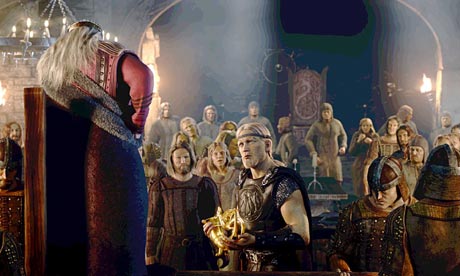An Anglo-Saxon feasting hall unearthed beneath a village green in Kent could
represent the "tip of the iceberg", according to archaeologists who believe
it lies amid an entire complex of ancient buildings.
The rare 7th to 9th century hall, which would have accommodated up to 60
people during royal feasts, was the first to be discovered in more than 30
years when it was excavated by Reading University experts this summer.
But further developments are expected over the coming years as researchers
plan to scour the surrounding area in the hope of finding an entire network
of other buildings.
Feasting halls like the one uncovered in Lyminge, which contained jewels,
animal bones and a broken horse's harness, were always part of a larger
complex of houses built for accommodation and other ceremonial purposes
during royal visits, experts explained.
Read the rest of this article...




